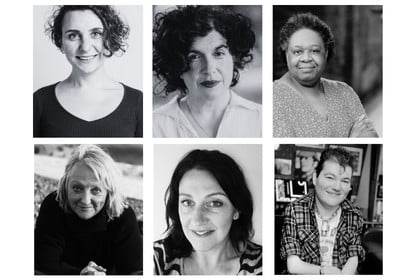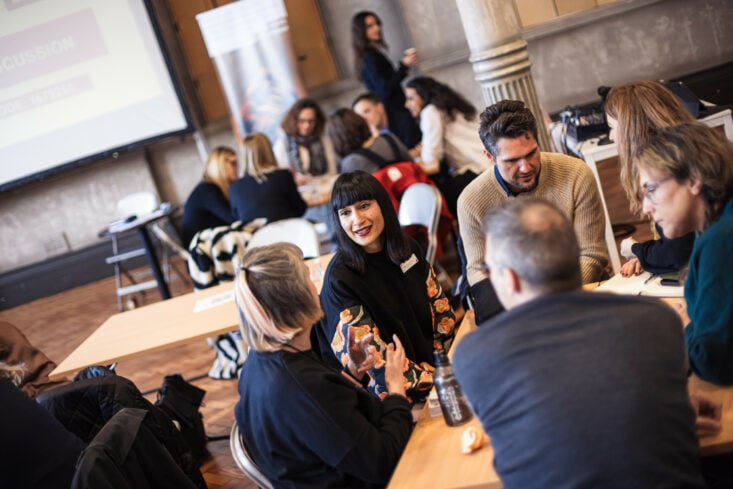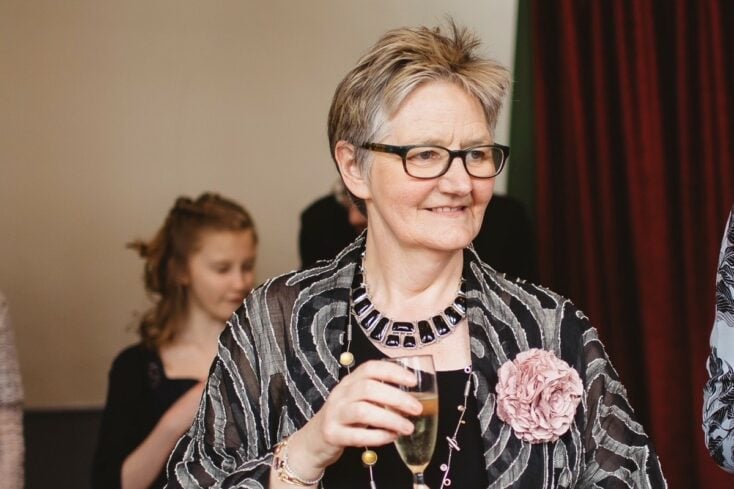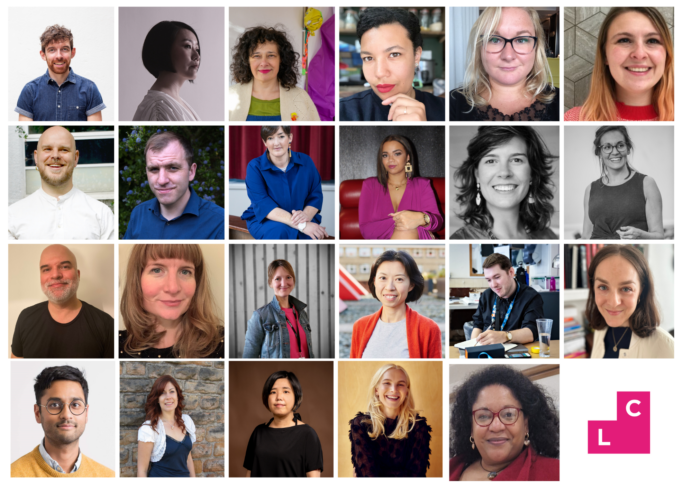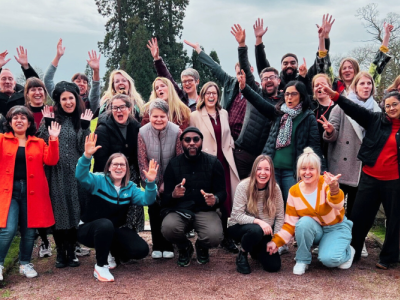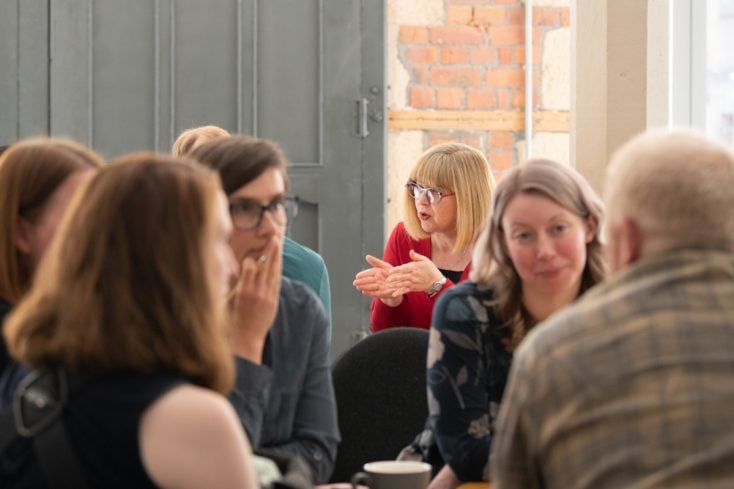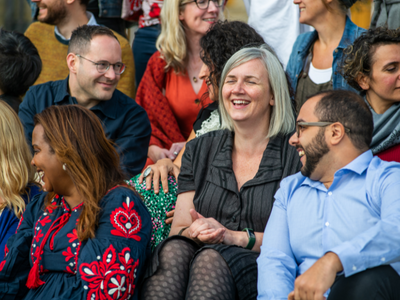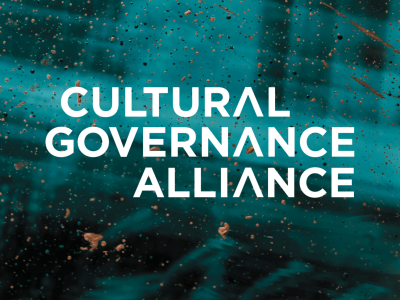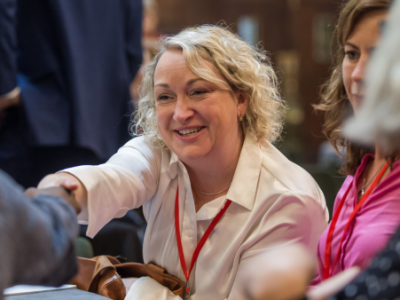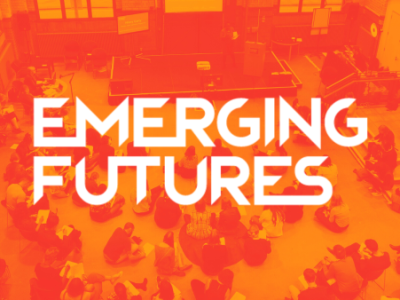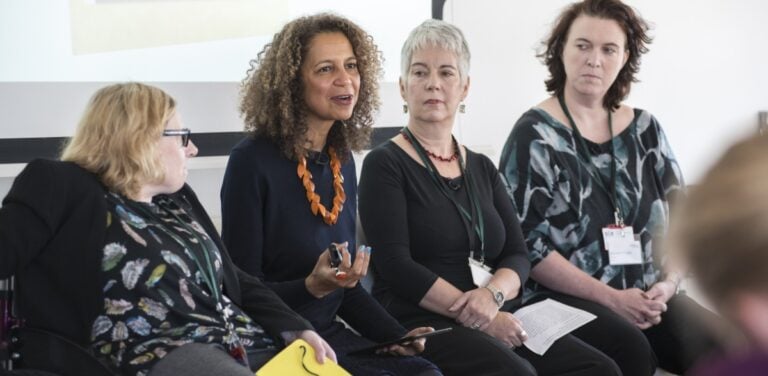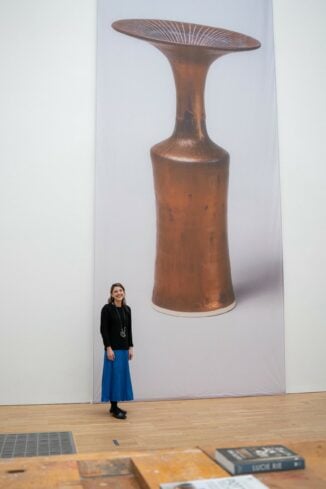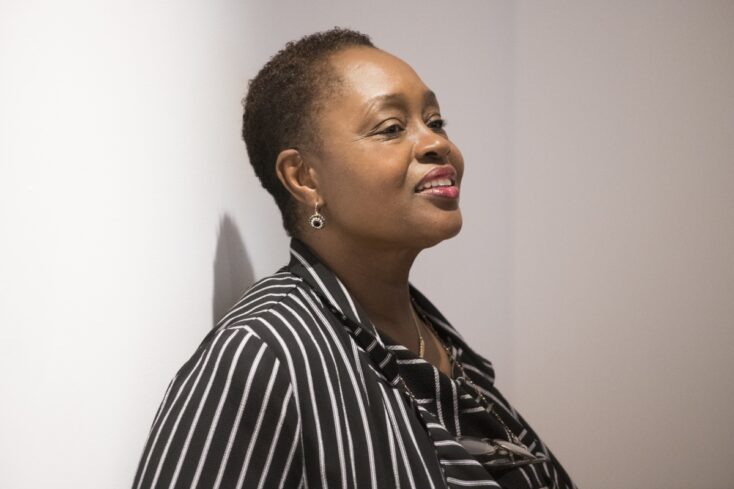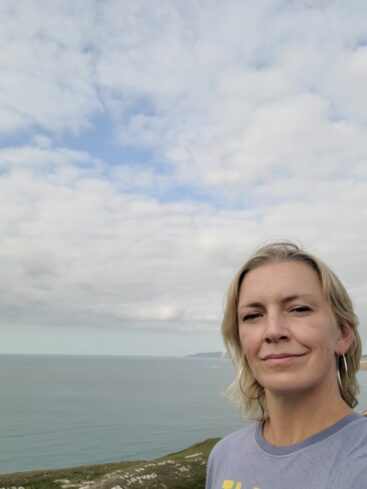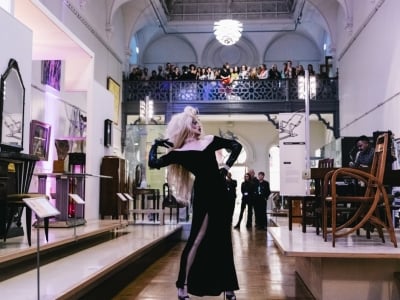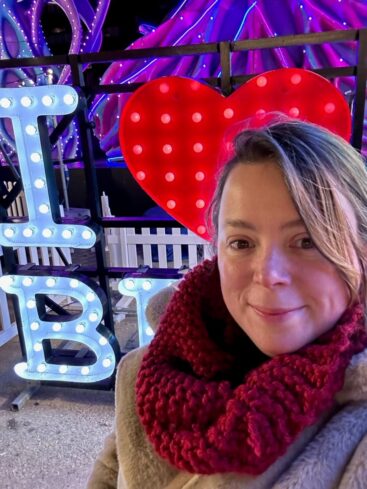The Art of Conferences: The Laziness of our Sector at its Absolute Best?
Clore 14 Fellow strong Lucy Oliver-Harrison explores some of the fundamental problems with conferences and calls for a disruption of the status quo.
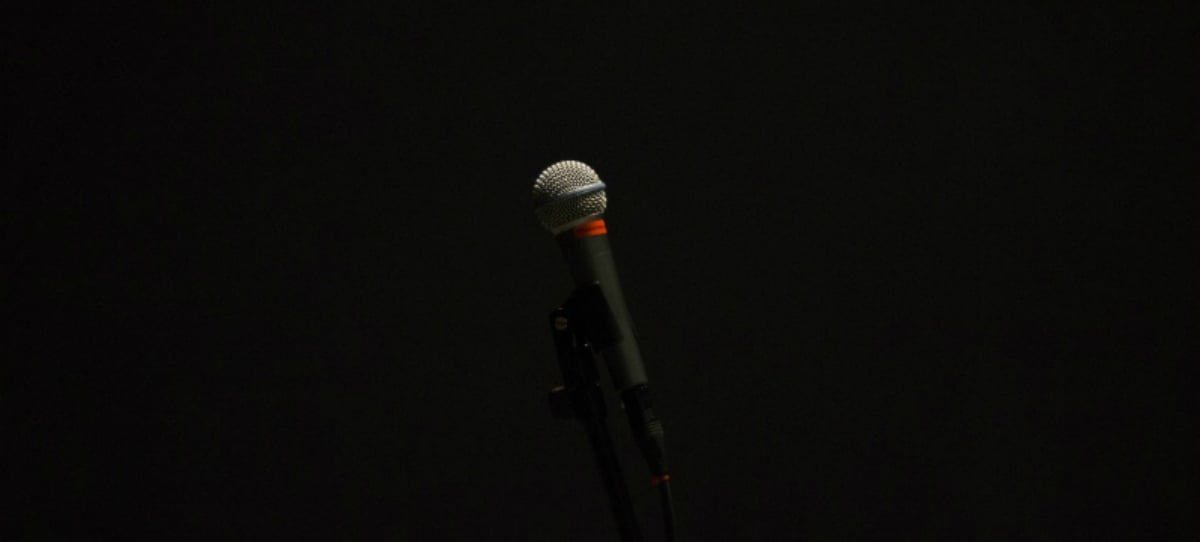
Lucy lives in London and is currently a consultant for University College London on its Theatre Programme. Until recently, Lucy was Executive Director of The Yard Theatre in Hackney Wick. As its first Executive Director, joining the organisation in 2013, Lucy was at the forefront of the organisation’s growth, including leading on acquiring management of local community centre, Hub67, expanding The Yard’s local profile and reach. Previously freelance, Lucy has worked at organisations including the Bush Theatre, Headlong Theatre and Ambassador Theatre Group. She has also held Trustee/Director positions for the Women’s Resource Centre and the Hackney Wick and Fish Island Community Development Trust.
The art of conferences…
What is a conference? “A formal meeting of people with a shared interest, typically one that takes place over several days.” (Oxford Dictionary)
Recently, through the Clore Fellowship, I have been lucky enough to attend conferences in London, New York, Wolverhampton, Porto and Manchester. They have generally focused on themes of arts in society, socially engaged practice, arts and tech, and the future of the arts – how the arts can be a catalyst for change, can shape and empower communities and are integral to our lives. From these (and previous conferences), my experience is that:
- The ‘expert’, or ‘experts’, talk down at you from a stage, often with a Chair/Moderator with a lot to say who becomes an additional panel member
- You generally bump into the same people, with limited opportunities for ‘meeting’ new people
There is a lack of diversity (across disability, gender, race, age, class), from the speakers to the audience and they are often inaccessible (e.g. physically, financially).
To me, this doesn’t demonstrate a ‘meeting of people’ to explore, and maybe even develop, our ‘shared interest’ in the power of the arts and cultural sector. Rather, this is a structure that is fundamentally boring, hierarchical and inherently uncreative. As the ‘creative’ sector, is this conference structure we use not the antithesis of the conversations we are trying to have and the industry in which we exist? If so, then why do we have them? Do they represent the laziness of our sector at its absolute best?
I want to call for a disruption to the status quo, rather than our continued reinforcement of it. In this paper I will be exploring some of the fundamental problems with conferences, the need for a space for people to meet, and what conferences might look and feel like in order to be representative of our sector, and maybe even progressive.
My hope is that by shifting the way we ‘meet’ and talk about our ‘shared interests’ we can reinvigorate not only the way conferences are run, but also our sector. We have a wealth of expertise and opportunity to break down these structures and reimagine them, together.
The state of conferences…
As soon as I mention to anyone in the sector that I am writing about conferences, they all have something to say about how much they dislike them and an anecdote to demonstrate that. There are people who categorically refuse to go to, or can’t access them. There are people who only speak and then leave. And there are people you see at every one.
To expand on some of the conference trademarks identified above, here are some of my recent experiences:
Diversity of participants:
Despite ‘best efforts’, the people talking are still predominantly white men with a group of white people listening. Obviously this is because white men are still holding the majority of the most senior positions in our sector, and this is a wider conversation. But it does remind us that in conversations about giving power over to others, about cultural democracy, about diversity, do we really believe what we’re saying when we’re listening to the same people talking from their position of power? With panels of similar suspects, and tokenistic references to diversity, conferences are unfortunately just perpetuating the lack of diversity in our sector and further inflating egos.
As Columba Achilleos-Sarll and Amy Galvin-Elliott commented on a feminist conference that included important conversations on intersectionality, inclusion and solidarity, there was still “no denying that these discussions were being held in a space that was predominantly white, female, and relatively privileged. It is important therefore to acknowledge that, even in a so-called ‘feminist’ space of collaboration and knowledge sharing, the same behaviours that facilitate marginalisation are in danger of being reproduced even if unintentionally.”
Diversity of opinion:
Aside from the makeup of those speaking at and attending conferences, I have also been struck by the lack of diversity of opinion or experience. Where there have been cross industry events, there is no effective structure that genuinely promotes conversation and collaboration. We are currently asking questions and creating solutions within our bubbles. As Dave O’Brien reminds us “being liberal, left-wing and pro-welfare might be great but it is not how many people in society feel”. Unless we step out of our closed creative class, that is currently “only capable of talking to itself” (Dave O’Brien), then we are never going to understand what cultural democracy can mean to our society and what society means to the arts. Conferences could be the perfect opportunity to shift this.
Financial Access
At so many conferences I hear the phrase, “where are the artists in the room?” It seems odd that we have yet to move beyond this and that we can’t understand, or don’t seem bothered, by the lack of artists in the room, let alone anyone who might not consider themselves part of this sector. Generally these events are not being promoted to artists in the first place, but the barrier to access, however, is often money. When artists are earning on average £10,000 a year (equating to £192 a week to live on), it’s unlikely that they will invest this in a conference that, from my experience, is likely to cost in excess of £50, plus likely travel and accommodation. How can we have effective conversations without these people in the room?
A non-London based artist told me that she prioritises her money, and saves up for IETM as it’s a conference that she knows about at least six months in advance, it has an international dimension, it is good for networking/having meetings, you can get a sense of the local theatre scene, it’s cheaper than getting to London for a conference, there are a variety of talks, the atmosphere is ‘quite open’ and the attendance fee (even if you’re not a member) is extremely reasonable. It’s good value for money. If the artists aren’t there then is what’s being discussed valuable?
Physical & Psychological Access
There is also practical access. At a recent conference, the lack of an accessible closing party venue created a boycotting of that venue and a move to an alternative accessible one. This collective action was inspiring, although it shouldn’t have been necessary. We have the power to collaboratively re-imagine what these structures look like and the spaces within which they exist.
As part of this, I am reminded of the theory of ‘psychologically safe workplaces’. How are we addressing our unconscious biases, both individual and collective, to ensure we create the right environment?
At a recent conference, as the structure unfolded, people became frustrated, commenting that “the power of this conference is lying in the curators” and “this is a socially engaged conference that is not socially engaged”. A speaker attempted to subvert the structure by disregarding their speech, encouraging conversations with the person next to you and then some dancing. Although not necessarily wholly successful, the atmosphere shifted and the flaws of the structure were revealed.
So if we generally dislike conference structures then why do we have them? As Maddy Costa suggests, is it “easier to talk about change, by programming hand-wringing conferences dedicated to discussing what change might look like and how it might be brought about, than it is actually to implement it”? With a lack of progressive structures, diversity and access, we become thinkers rather than doers. We lack action. And conferences become futile: “the tree that hides the absence of the forest” (Basma El-Husseiny, Action for Hope, ISPA New York, 2018).
But hey, we do get free tote bags, endless leaflets, copious pastries and maybe even a free lunch, so what’s your problem?
The need for conferences…
Let’s get back to basics then… what inspires us to go to conferences?
- The opportunity to learn from others
It is only through learning from each other and connecting across our sector, and beyond, that we can shape and demonstrate what the role of arts can be in our society. There is the opportunity to learn from our failures, as well as our successes. Without this learning, we can’t move forward. - The opportunity to network/meet new people?
At the heart of our sector lies collaboration. It is, or should be, in our DNA – the want to exchange, and to work together to build something that’s more than the sum of its parts. Meeting new people should inspire creativity and diversity of thought. Or as Tim Smit from the Eden Project put it, the opportunity to “meet the people you didn’t know you needed” (REMIX, London, 2018). - A day out of the ‘office’?
Maybe, slightly more cynically, it’s really about having a day off, breaking the day to day, and getting a free lunch… - For those organising, they can also be a great money-making activity. But, despite recognising the need to diversify our income streams, I am not convinced this should form the basis for running a conference!
For me, the role of conferences should be to:
- Make new connections
- Inspire new ways of thinking
- Facilitate collaboration
- Create plans for action
There can also be a place for celebrating what we do in a relentless industry, without becoming self-congratulatory or ignoring the urgent and constant need for progression.
So how do we make this happen? What might they look like?
Fundamentally, let’s just have fewer conferences. But, if we recognise that there can be incredibly useful content shared and there is a need for a forum then, as a sector, how do we want to gather? How do we want to share ideas and initiate collective action? How do we want to learn from and celebrate our failures? We need to stop being lazy, put more thought into what each conference is trying to achieve, and break down the existing structures and formulae that we follow.
Thankfully there are examples of those that haven’t been so quick to accept the standard conference structure and to establish something more creative…
For example, the ‘un-conference’, “a loosely structured conference emphasising the informal exchange of information and ideas between participants, rather than following a conventionally structured programme of events” (Oxford Dictionary). There are guidelines on how to run an un-conference , the structure of which, for example, is applied to the company Improbable’s Devoted & Disgruntled events.
There are also online conferences that address some of the access issues, but potentially limit the capacity for new connections and collaboration. They are clearly useful as a means of sharing information and inspiring with examples, but I would say less useful for the collective creation of action plans.
At a recent conference I was inspired by its human-ness and ambition to connect those attending. Although there were ‘speaking at the audience’ sessions, the format did vary. There was an un-conference area, time for introductions to people sitting around you, moments following a talk for people to form questions with their neighbours, a decent amount of time for questions, the opportunity to put questions on post-it notes (for those less confident to speak), and a shared meal in the evening.
However, I still believe we need more holistic, radical change. Otherwise these events will epitomise a complacency that I believe currently exists within our sector. And it’s not good enough. So what are the methods, then, for talking to each other, connecting across the industry and beyond, to drive the ‘innovation’ that our sector is known for? How do we avoid maintaining the status quo, to create real dialogue, and allow the space for a depth of conversation?
I would like to call for no more conferences that are lazy and lack significant interrogation as to why they’re happening. To do this, I’ve suggested some questions to ask before putting on a conference that will help to ensure you are enabling our sector to move beyond its current structures…
- Who’s in the room? How are you ensuring that you are truly accessible for all and that you have a range of voices participating and attending.
- Who is speaking? How do you create ‘safe’ spaces to allow everyone the opportunity to speak?
- What do you want people to go away from the day with? What are the actions?
- How will the conversation keep going?
- How will you measure whether actions have been taken?
- What does a successful conference look like?
- Is this just a money maker? (If the answer is yes, then don’t do it!)
As a result, we might begin to include, meet and learn from the unexpected people within and outside our sector – those that we don’t currently meet at conferences: artists, administrators, interns, people from outside our sector, or those not yet in the sector (e.g. school students).
I would also advocate for good Chairs/Moderators and no stages! We need to think more about the spaces within which these conferences exist to remove hierarchy and create an openness. For example, what does an outdoor conference look like? Cold, probably. But public and welcoming feels important. We need to undo the structure from the inside and ensure that we place the same level of expectation of quality on a conference as we would on any artistic creation.
For those attending conferences, I would then suggest we all interrogate our reasons for attending and ensure we have a:
- Reason for going in the first place;
- Genuine curiosity and willingness to listen;
- Desire to collaborate and advance the sector.
With this interrogation into why a conference is created and why we are attending, we will begin to demonstrate a value for each other’s time, in what is generally a resource-poor sector. And maybe then conferences could be a starting point and a place for re-imagining the inherent structures of our sector? The inherent structures that are also often boring, hierarchical and uncreative. Maybe…
Themes Alumni Journeys Sector Insights


